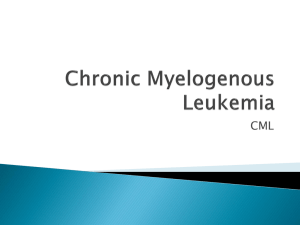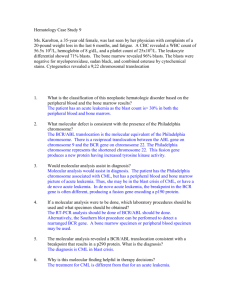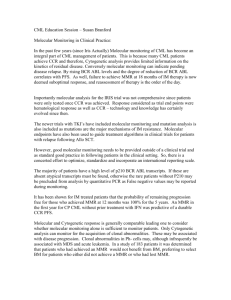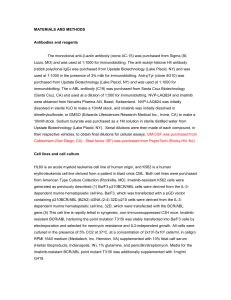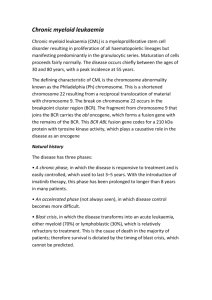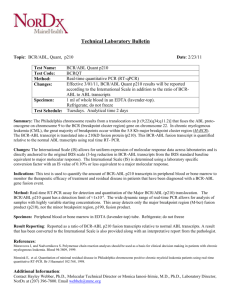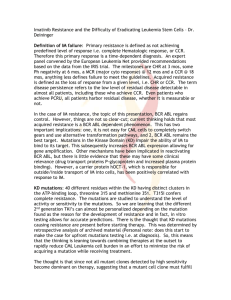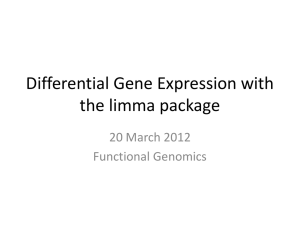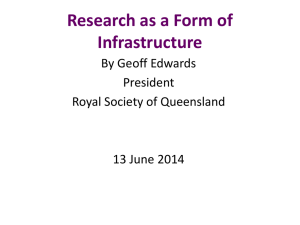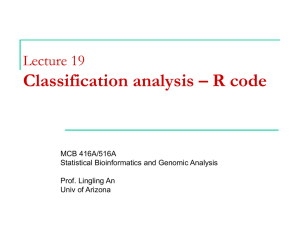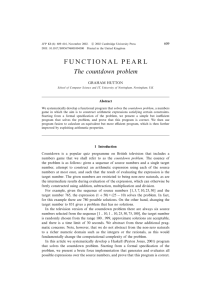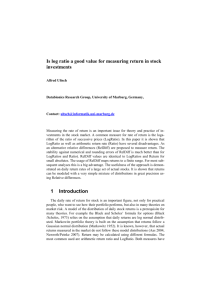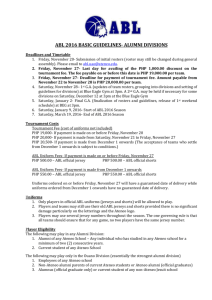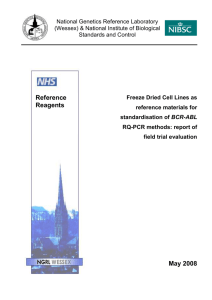Omics – Analysis of high dimensional Data Exercises Wednesday
advertisement
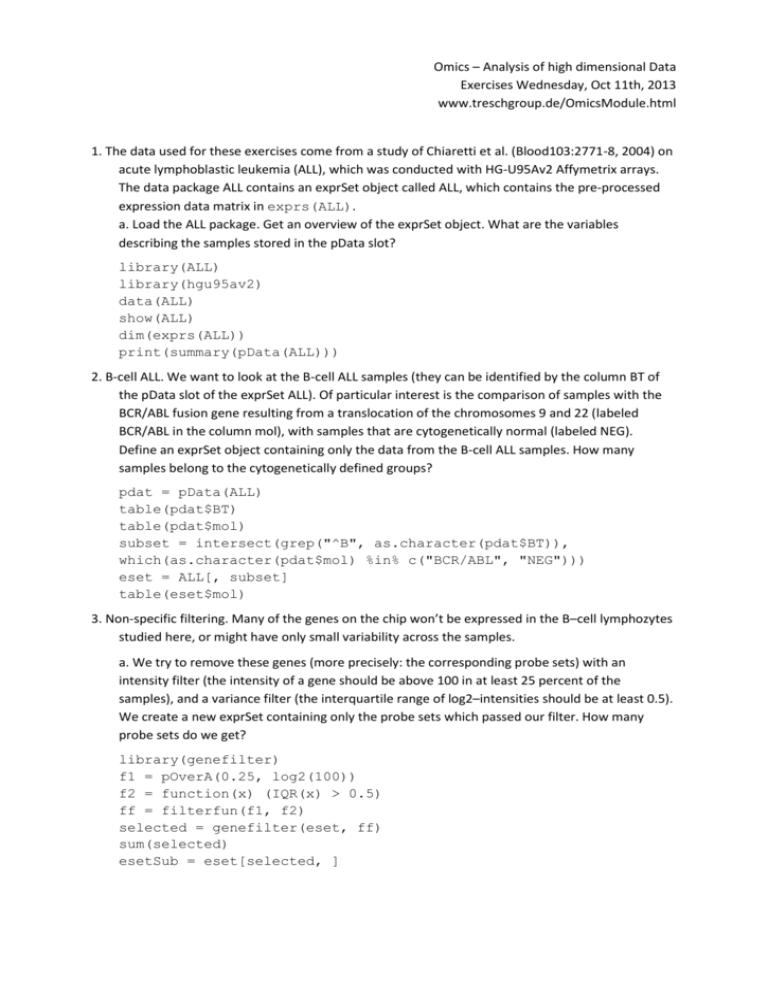
Omics – Analysis of high dimensional Data
Exercises Wednesday, Oct 11th, 2013
www.treschgroup.de/OmicsModule.html
1. The data used for these exercises come from a study of Chiaretti et al. (Blood103:2771-8, 2004) on
acute lymphoblastic leukemia (ALL), which was conducted with HG-U95Av2 Affymetrix arrays.
The data package ALL contains an exprSet object called ALL, which contains the pre-processed
expression data matrix in exprs(ALL).
a. Load the ALL package. Get an overview of the exprSet object. What are the variables
describing the samples stored in the pData slot?
library(ALL)
library(hgu95av2)
data(ALL)
show(ALL)
dim(exprs(ALL))
print(summary(pData(ALL)))
2. B-cell ALL. We want to look at the B-cell ALL samples (they can be identified by the column BT of
the pData slot of the exprSet ALL). Of particular interest is the comparison of samples with the
BCR/ABL fusion gene resulting from a translocation of the chromosomes 9 and 22 (labeled
BCR/ABL in the column mol), with samples that are cytogenetically normal (labeled NEG).
Define an exprSet object containing only the data from the B-cell ALL samples. How many
samples belong to the cytogenetically defined groups?
pdat = pData(ALL)
table(pdat$BT)
table(pdat$mol)
subset = intersect(grep("^B", as.character(pdat$BT)),
which(as.character(pdat$mol) %in% c("BCR/ABL", "NEG")))
eset = ALL[, subset]
table(eset$mol)
3. Non-specific filtering. Many of the genes on the chip won’t be expressed in the B–cell lymphozytes
studied here, or might have only small variability across the samples.
a. We try to remove these genes (more precisely: the corresponding probe sets) with an
intensity filter (the intensity of a gene should be above 100 in at least 25 percent of the
samples), and a variance filter (the interquartile range of log2–intensities should be at least 0.5).
We create a new exprSet containing only the probe sets which passed our filter. How many
probe sets do we get?
library(genefilter)
f1 = pOverA(0.25, log2(100))
f2 = function(x) (IQR(x) > 0.5)
ff = filterfun(f1, f2)
selected = genefilter(eset, ff)
sum(selected)
esetSub = eset[selected, ]
4. Differential expression. Now we are ready to examine the selected genes for differential
expression between the BCR/ABL samples and the cytogenetically normal ones.
a. Use the two–sample t–test (t.test) to identify genes that are differentially expressed
between the two groups.
classes = (esetSub$mol == "BCR/ABL")
pttest = apply(exprs(esetSub), 1,function(x){
t.test(x[classes==0], x[classes==1])$p.value})
hist(pttest, breaks=50)
b. Use the two-sample Wilcoxon test (wilcox.test) for the same purpose
pwilcox = apply(exprs(esetSub), 1,function(x){
wilcox.test(x[classes==0], x[classes==1])$p.value})
hist(pwilcox, breaks=50)
b. Plot the p–values against the log–ratios (differences of mean log–intensities within the two
groups) in a volcano plot, one for the t-test, and one for the Wilcoxon test.
logRatio = rowMeans(exprs(esetSub)[, classes == 1]) rowMeans(exprs(esetSub)[,classes == 0])
plot(logRatio, -log10(pttest), xlab = "log-ratio", ylab = "log10(p)",main=”t-test”)
plot(logRatio, -log10(pwilcox), xlab = "log-ratio", ylab = "log10(p)",main=”Wilcoxon test”)
d. The function mt.rawp2adjp from the multtest package contains different multiple testing
procedures. Look at the help page of this function. For p–value adjustment in terms of the FDR,
we use the method of Benjamini and Hochberg. How many genes do you get when imposing an
FDR of 0.1?
library(multtest)
pAdjusted = mt.rawp2adjp(pttest, proc = c("BH"))
sum(pAdjusted$adjp[, "BH"] < 0.1)
Also this function returns the adjusted p–values ordered from the smallest to the largest. To
obtain the original ordering, we do:
pBH = pAdjusted$adjp[order(pAdjusted$index), "BH"]
